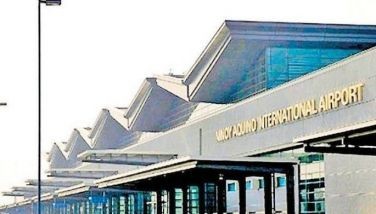Paying a premium for Acts of God
MANILA, Philippines - Only one in five cars in the country was insured against this. Ondoy showed us this was a very big mistake.
The destruction was as widespread as it was complete; an almighty deluge that left so many dead, more injured, and even more displaced. Like numerous perverse art exhibits throughout the metropolis, once proud symbols of urban life were rendered into twisted junkyard dioramas of broken hearts and dreams.
Once in a while, we are reminded of how truly fragile life is – and that even our surest, most dependable, and certainly costly possessions can be taken away in a flash. More correctly, in a flash flood. Aside from the lives and homes lost, there were the vehicles – untold scores of them, in fact.
Vehicles were left in impossible positions as the chocolate-colored water receded. Upended, piled up on top of the other, half-suspended by electric wires from teetering posts – cars were reduced to stinking carcasses indistinguishable from one another. Expensive European brands and cheapest people movers alike were equally savaged. Even those left in secure garages were not spared. ECU boxes, engines, upholstery – they all looked and smelled the same after Ondoy.
Muddy, previously indundated sedans and SUVs that reeked of dirty water and rendered inoperable now silently crammed the repair bays of car dealerships and shops like war casualties waiting for turn on the operating table.
New car owners thought they could find solace in their comprehensive insurance – only to be told that only those with an “Acts of God” (AOG) provision would be covered.
Wait a minute. Does that mean God should foot the bill? Well, AOG (others call it “acts of nature”) is actually a legal term “for events outside of human control, for which no one can be held responsible.”
“That can be a typhoon, flood, earthquake, volcanic eruption, hurricane,” said Claire Chua, general manager of Binondo-based Western Guaranty Corporation. Such Day After Tomorrow images might be a far-fetched notion elsewhere, but not in the Philippines – which sits precariously in the so-called Pacific “ring of fire” (making it earthquake prone and volcano friendly), and is in typhoon alley as well. We have the unenviable role of being greeters of typhoons making their way towards Asia. Still, no one expected the magnitude of the tragedy that befell Metro Manila and its environs. We were caught off-guard, and we were left in shock.
To be fair, auto manufacturers tried to do their part to ease car owners’ woes through significant discounts on parts and labor. Even insurance companies pitched in. “We sent out tow trucks to extend help to affected customers even if they weren’t technically covered,” said Chua.
The fact of the matter is, AOG coverage spells the crucial difference between being left with a stinking, broken ride and one brought back to life. Consider that only an estimated 20 percent of some five million registered vehicles in the country has AOG insurance, and experts say the tab to repair a flooded vehicle starts at around P200,000. No chump change, that’s for sure.
Some insurance firms include AOG in comprehensive automobile coverage packages. Bad news for them; good news for customers. Reports have it that AOG cover will cost insurance firms a whopping P1 billion in repair and reimbursement. That’s because car owners suffering damage of 75 percent or more will be paid in cash instead.
They are the lucky few.
Many more owners having third-party or even comprehensive liability plans are sadly faced with the burden of choice – whether to resuscitate their ride or not. A majority of insurance companies does not carry AOG cover as standard on comprehensive plans. That means you have to have the foresight and willingness to pony up the dough to specifically request for it. And since many Pinoys never thought their wheels were in any imminent danger from lava flow, flash flood, or an earthquake, they saved a few pesos and waved off the coverage.
Pre-Ondoy, additional premium for AOG ranged from 0.25 to 0.5 percent of vehicle cost. That meant an additional P5,000 on top of your comprehensive package if you owned a P1 million SUV or sedan. Not really a bad deal, considering.
Hindsight, of course, is 20/20.
Now, everyone’s talking about AOG. Frantic owners ruffled through their forgotten insurance policies – hoping against hope to find a provision on AOG – only to realize after reading all the fine print that they weren’t covered. That raised the hackles of Sen. Nene Pimentel, who said that it was tantamount to defrauding customers.
Insurance firms, meanwhile, are taking a long hard look at their actuarial tables, prompting some to hike the AOG rate to 0.75 percent. Chua said, though, that Western chose to keep it at 0.5. “The business is much too competitive.”
You would be forgiven to conclude that everyone and his mother must want AOG coverage now, right?
Wrong.
Chua narrated: “Immediately after Ondoy, we discovered that customers initially wanted AOG coverage. But after we gave them a computation of premiums, some people didn’t go for it anymore.”
Seriously.
- Latest





























